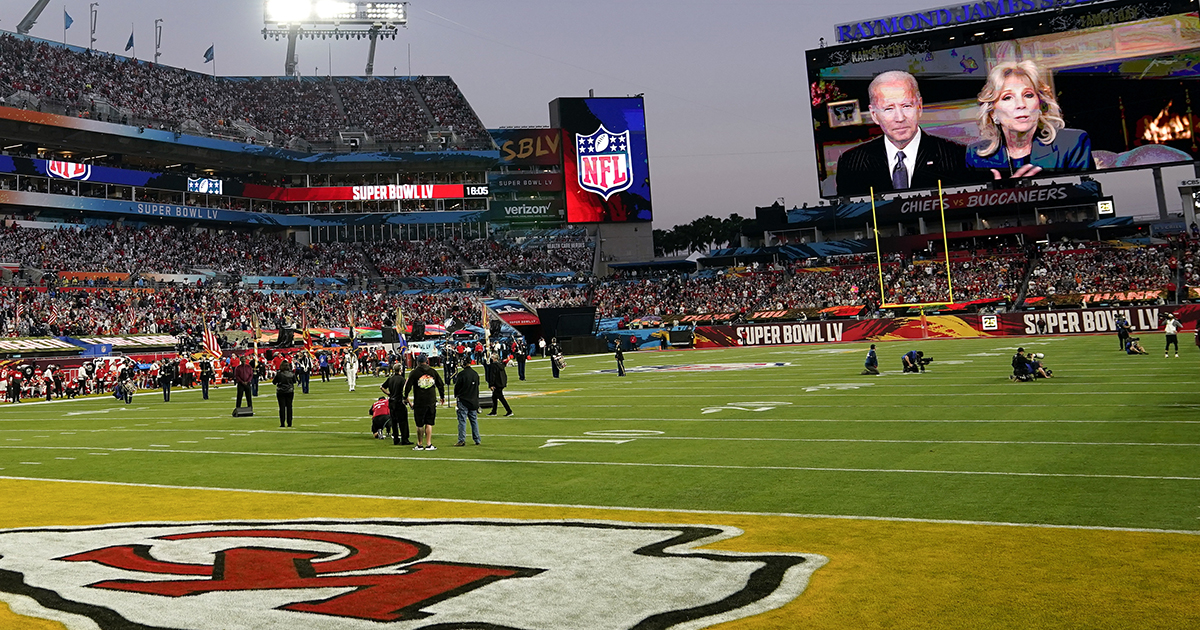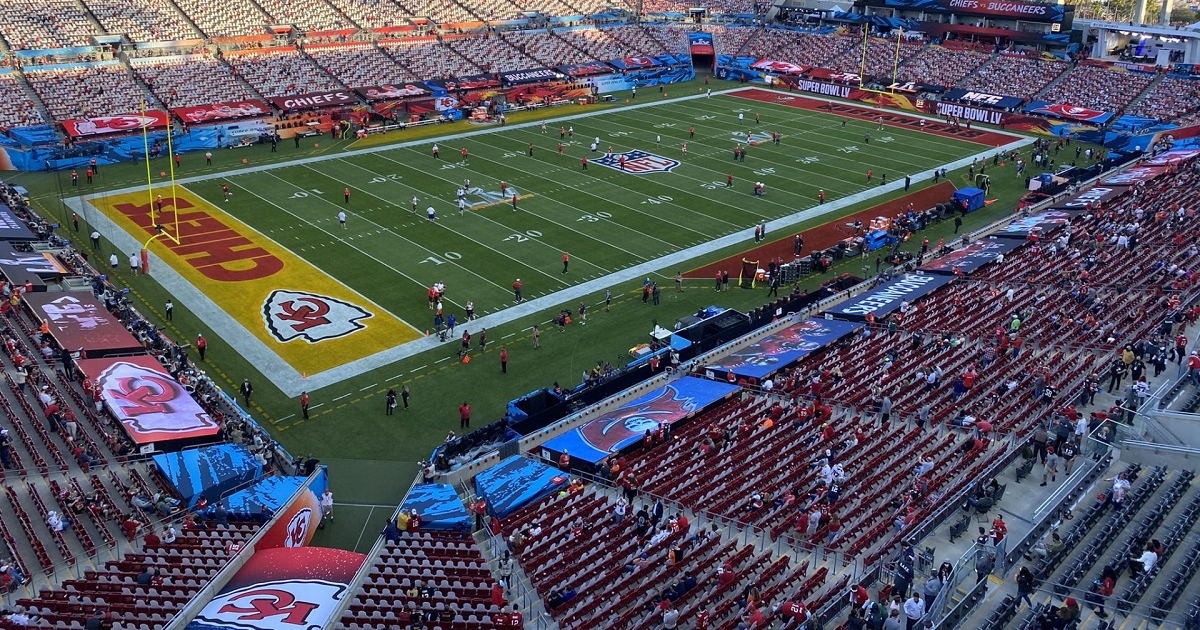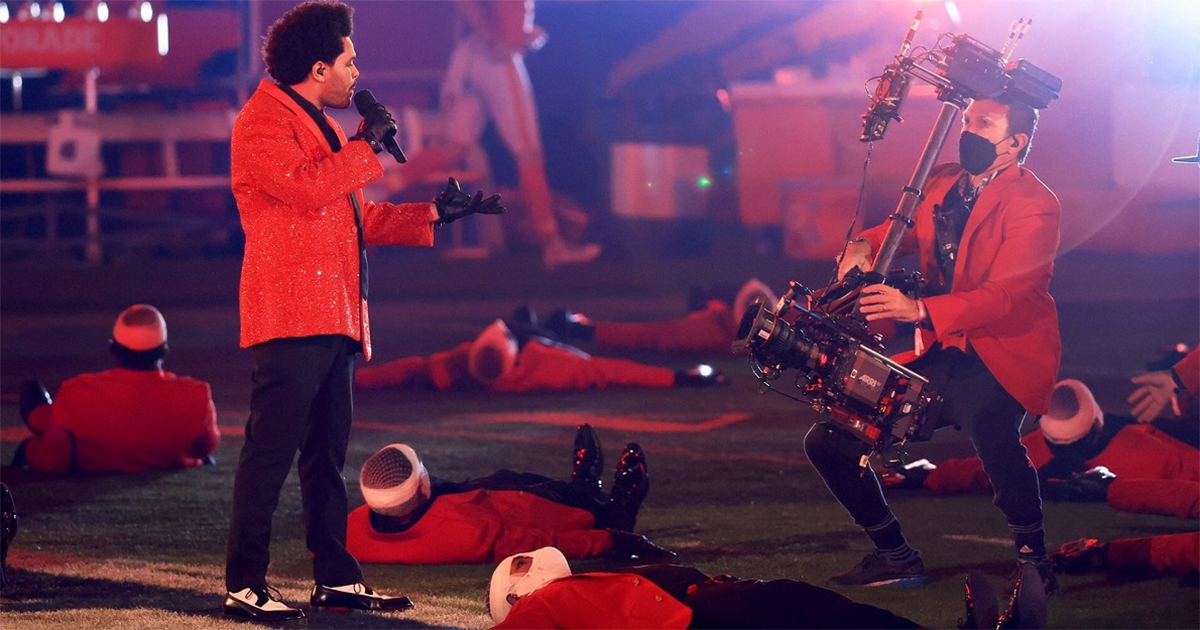Super Bowl LV on Sunday, February 7 marked the eighth consecutive year Extreme Networks delivered WiFi network solutions and WiFi analytics technology for the championship event. This was the first 100% cash-free, mobile ticketed NFL game in history.
Though fan presence at Raymond James Stadium was limited to 25,000 fans, WiFi usage demonstrated those in attendance were more connected than ever, while network operations behind the scenes reduced operating risk and aided the safety of everyone in the stadium.
Data revealed approximately 80% of in-range devices were connected to the WiFi network, up from 71% during Super Bowl LIV. Average usage per device has more than doubled since Super Bowl LI, with fan devices this year consuming 587.8 MB of data compared to 253.7 MB in 2017.
Additionally, peak network utilization hit 7.9 Gbps, a 2.5 Gbps difference from last year’s peak at 10.4 Gbps but with a crowd half the size, illustrating the increased reliance on WiFi connectivity for fan engagement at Super Bowl LV.
1,440 ExtremeWireless access points (APs) were installed throughout Raymond James Stadium to ensure fast, secure connectivity during the regular season, with 950 APs installed in the bowl of the stadium. An additional 83 APs were installed just for Super Bowl LV to support fan access to mobile tickets, use of mobile ticket scanners, the media tent, and VIP areas.

ExtremeAnalytics software provided real-time insight into how users, devices, and applications interacted with the WiFi network to assist in delivering a more robust fan and staff experience during Super Bowl LV and future NFL games. While the circumstances of this year’s game will not all be applicable to future events, the introduction of touchless and cash-free technology is likely to expand, and data from this year’s game will help provide insights on how to improve experiences for all.
ExtremeWireless APs deployed at each gate ensured an all-mobile ticketing experience. WiFi connectivity extended beyond the gates, broadcasting wireless connectivity to fans just outside the stadium so pre-game ticket transfers could take place without delays.
“We had to pivot to a totally mobile ticketing strategy and were heavily reliant on network technology to be flexible and adapt.”
— Aaron Amendolia, NFL
To improve service and safety, this was the first Super Bowl to move solely to cash-free transactions. Fans paid using valid debit or credit cards or mobile wallets, and those who brought cash used reverse ATMs to convert cash to prepaid Visa cards.
Michelle McKenna, Chief Information Officer for the National Football League said, “This game proved to be an excellent case study as we look toward the future of the NFL and the Super Bowl. It has always been our goal to integrate additional technology like mobile ticketing and cash-free payments into our operations, and while we faced many challenges this year, we were able to successfully accelerate our plans and allow fans to safely attend this year’s game.
“We are thankful for everyone who was part of planning for and organizing this year’s game and we are excited to see what the future brings as we continue to introduce cutting-edge technology into our stadiums,” said McKenna.
Aaron Amendolia, Vice President of Information Technology Services, The National Football League added, “We have increased our technology usage at each Super Bowl for the past several years to enhance the fan experience and ensure the best possible game day, but COVID was a huge forcing function during the planning of Super Bowl LV.
“We had to pivot to a totally mobile ticketing strategy and were heavily reliant on network technology to be flexible and adapt. The success of this game will be reflected in our plans for next year, and we anticipate that fans will continue to see increased mobile ticketing and further technology deployments at Super Bowl LVI and beyond.”




